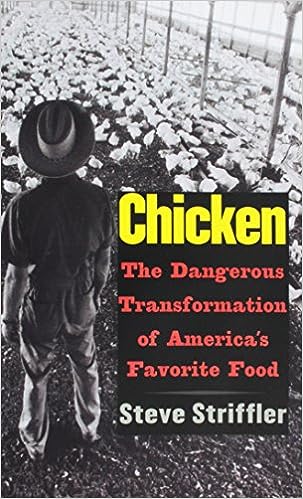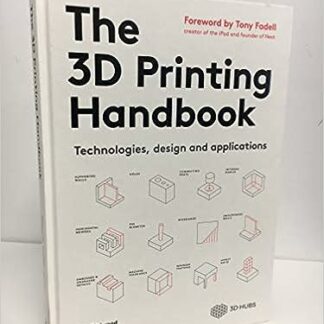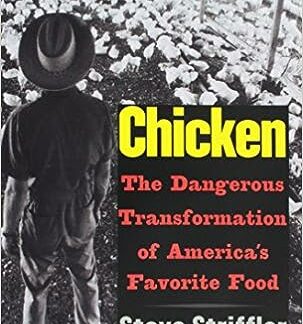Description
From inside the chicken factory, a report on the real cost of chicken for farmers, workers, and consumers Anthropologist Steve Striffler begins this book in a poultry processing plant, drawing on his own experiences there as a worker. He also reports on the way chickens are raised today and how they are consumed. What he discovers about America’s favorite meat is not just unpleasant but a powerful indictment of our industrial food system. The process of bringing chicken to our dinner tables is unhealthy for all concerned—from farmer to factory worker to consumer. The book traces the development of the poultry industry since the Second World War, analyzing the impact of such changes as the destruction of the family farm, the processing of chicken into nuggets and patties, and the changing makeup of the industrial labor force. The author describes the lives of immigrant workers and their reception in the small towns where they live. The conclusion is clear: there has to be a better way. Striffler proposes radical but practical change, a plan that promises more humane treatment of chickens, better food for the consumer, and fair payment for food workers and farmers. Read more
Review “Like Fast Food Nation, Chicken will drop more than a few jaws with its descriptions, facts, and figures. That’s all the better. I hope that this smart book will be passed from hand to hand, so that consumers will challenge the status quo and so that activists, environmentalists, labor rights organizers, and others will recognize how closely their issues are linked.”—Joel Stonington, Orion”[A] fast-paced narrative, rich with personal detail.”—Publishers Weekly”The work [Striffler] did [in a chicken processing plant] gives his book an amazing and courageous peek inside the plant, the sort of place that is usually off limits to the media. . . . Striffler clearly takes sides in the book, but the righteous indignation and polemics don’t overpower the scholar’s comprehensive approach to the topic. His insight goes beyond the problems of chicken.”—Scott Carlson, Baltimore City Paper”Striffler is a gutsy academic willing to dirty his hands, an academic who . . . writes well. . . . Chicken ought to become a touchstone. . . . The information-gathering is superb. . . . Striffler tells a gripping story.”—Steve Weinberg, Des Moines Register”[A] superbly researched and gripping book. . . . Striffler is a gutsy academic who is not afraid to get his hands dirty.”—Steve Weinberg, Orlando Sentinel”A very readable indictment of today’s poultry industry, with hopeful pointers toward the humane and healthy chicken-of-the-future.”―Future Survey”[A] slim but powerful book. . . . Striffler combines firsthand experience, interviews and some riveting history with current events to make for a powerful account.”―Brian DeVore, The Land Stewardship Letter”A powerful look behind the inexpensive and ubiquitous chicken that many of us buy in supermarkets. . . . A good book like Chicken spurs new questions and further study. The text is pithy and accessible to the educated general public as well as to an array of consumer advocates, immigration reformers, geneticists, economists, nutritionists, politicians, agricultural historians, environmentalists, rural developers, and activists. While suitable for undergraduate reading, I would highly recommend it to graduate students in search of research focus. Anyone who digests this book will be aroused.”―Deborah Fink, Arkansas Historical Quarterly”This is an accessible book and a good, popular introduction to the politics of food, contemporary labor conditions, immigration, and the everyday effects of corporate power. It is a good text for introductory college courses, and a good read for non-academics.”―Sharryn Kasmir, Science & SocietySelected for the National Agricultural Library collection.”Striffler presents the first in-depth look at the rise of the chicken industry in late twentieth-century America. The story is vivid, engaging, and—in chapters dealing with Mexican and other immigrant chickenworkers—riveting.”—Deborah Fitzgerald, author of Every Farm a Factory”A gripping and deeply sobering view of ‘big chicken’ from the bottom up. Striffler’s experience on the (dis)assembly line, his sympathetic grasp of the hopes, dreams, and origins of the workforce, and of the larger history of the industry, make for a uniquely powerful and memorable book.”—James C. Scott, Yale University”Modern chicken production and consumption is embedded in a fascinating web of political, economic, social, and even psychological factors that need to be described, understood, and questioned. Steve Striffler, combining scholarly analysis with his remarkable brand of participatory research, has produced a masterful book, one I will recommend widely.”―Kelly Brownell, Yale University”With gripping prose and clear analysis, Striffler’s Chicken brings workers, growers, consumers, as well as bird together around one big, unhappy table. His treatment of Mexican immigrant workers at Tyson’s, in particular, is a model of modern-day ethnography.”—Leon Fink, editor of Labor: Working-Class History of the Americas”Extraordinarily powerful. . . . This book will do for chicken what Fast Food Nation did for beef.” —Marion Nestle, author of Food Politics: How the Food Industry Influences Nutrition and Health About the Author Steve Striffler is associate professor of anthropology, University of Arkansas. Excerpt. © Reprinted by permission. All rights reserved. ChickenThe Dangerous Transformation of America’s Favorite FoodBy STEVE STRIFFLERYale University PressCopyright © 2005 Yale UniversityAll right reserved.ISBN: 978-0-300-12367-8ContentsPreface………………………………………..viiAcknowledgments…………………………………ixIntroduction……………………………………1PART I: A New BirdONE Love That Chicken!…………………………..15TWO An American Industry…………………………32THREE Anatomy of a Merger………………………..53FOUR The Right to Work…………………………..72PART II: A New WorkerFIVE Getting Here……………………………….93SIX Inside a Poultry Plant……………………….111SEVEN Growing Pains……………………………..135EIGHT Toward a Friendlier Chicken…………………155Notes………………………………………….173Index………………………………………….93Chapter OneLove That Chicken! Chicken, an afterthought on American farms before World War II, has been transformed into the most studied and industrialized animal in the world. It has gone from one of the most expensive and least desirable meats to an affordable source of protein that most Americans today consume frequently and with unthinking regularity. Herbert Hoover’s 1928 campaign promise seemed like political hyperbole at the time, but for most of the post-war period there has been a “chicken in every pot.” And when health-conscious consumers began to turn away from red meat in the 1970s, white-meat producers were ready for the increase in demand. During the decades surrounding World War II, American farmers, workers, scientists, feed dealers, and many others succeeded in drastically reducing the cost of chicken, delivering untold numbers of chickens to consumers, improving the health of Americans, and making a little money along the way. To be sure, there was a less glorious side to this capitalist miracle even in the early days of the industry. Like the food industry as a whole, power within poultry became concentrated in the hands of a few corporations. Poultry “integrators” came to control nearly every link of the chain, from egg production and the delivery of chicks to the processing and marketing of broilers. This concentration of power came at the expense of both chicken farmers, who lost control over their independent operations, and processing plant workers, who worked hard and earned little (see Chapter 2). Nevertheless, the agroscientific revolution that transformed much of the food industry led to astounding gains for purveyors of chicken. The amount of time required to turn a day-old chick into a full-grown broiler decreased by almost 20 percent between 1947 and 1951 alone. At the same time, the bird required less feed. In 1940, chickens required more than four pounds of feed for every pound of weight gained. By the late 1980s, this figure was down to around two pounds. As a result, from the 1920s to the mid-1950s the price of chicken declined steadily (and faster than the prices of its main competitors). In the late 1980s, the real price of chicken was less than one-third of its cost in 1955. Moreover, until very recently, Americans were consuming most of their chicken in very healthy forms: the whole bird, or the whole bird cut into its basic parts. Herbert Hoover’s slogan was a promise of economic prosperity that referred to a form of chicken and method of preparation familiar to Americans at that time. For the next fifty years, until processed chicken arrived on the American consumer’s radar, chicken became increasingly less expensive and more readily available, and it was consumed in these healthy forms. There was no downside for consumers. How quickly things change. For today’s generation, cooking a whole chicken in a pot is almost unimaginable. A “chicken nugget in every fryer” is a more apt slogan for those who have come of age in the past quarter century. Indeed, McDonald’s Chicken McNugget is a particularly useful historical marker. At the time of its introduction in the fall of 1983, Americans were still largely eating chicken in its most basic form. Processing was barely a shadow of its future self and was largely restricted to freezing or cutting the bird into parts. Butchers were becoming part of our nostalgic past, but the range of poultry products was still quite limited by today’s standards. The Chicken McNugget instantly made McDonald’s, already the largest user of beef, the second largest user of chicken (behind Kentucky Fried Chicken). During the twelve-week period in which McDonald’s introduced the McNugget, the company used five million pounds of chicken per week. McDonald’s was expected to sell some 3.5 billion McNuggets during 1984 in its more than six thousand restaurants. More importantly, the McNugget became the cornerstone of the chain’s appeal to kids. For the next two decades, children-the McDonald’s customers who bring so many others through the golden arches-came for McNuggets as the company expanded to around thirty thousand restaurants in over one hundred countries. McDonald’s did not introduce Americans to chicken. In fact, its introduction of the McNugget demonstrated that, by the 1980s, chicken was already an everyday food-and one that was becoming more popular than red meat. In 1984, Americans were eating twice as much chicken as they had been only two decades before. Meanwhile, beginning in 1976, beef consumption had begun a slow but steady decline. The expense of beef, combined with growing health concerns and questions about its safety, had begun to take a toll. Statistics tell part of the story. Between 1976 and 1989, per capita chicken consumption rose 50 percent, pushing chicken ahead of beef as America’s favorite meat. By the end of this period, one in three Americans claimed to be eating more chicken and less beef, due in large part to concerns about fat and cholesterol. To put it another way, by 1980, after several decades of growth, the average American ate nearly thirty-three pounds of chicken each year. But by 1995, only fifteen years later, the amount consumed increased to more than fifty pounds, and by the millennium that figure had climbed to roughly eighty pounds-while per capita consumption of beef fell to under seventy pounds, and pork consumption hovered near fifty. By 2001, the typical American household was serving chicken seven times a month, with the average person consuming an amazing eighty-two pounds of chicken a year, or three times the amount eaten in the 1960s. Chicken became king. But its ascent during the 1980s and 1990s was very different from its initial rise during the decades surrounding World War II. Beginning in the 1980s, or roughly around the time McDonald’s introduced the McNugget, the consumption of processed chicken rose remarkably and accounts for much of chicken’s success during the past two decades. In this respect, the McDonald’s McNugget not only reflected chicken’s postwar success, but also anticipated its future form. To be sure, McDonald’s did not introduce us to processed chicken any more than it introduced us to the bird itself. By the mid-1980s, we were eating chicken in foods such as franks, sausages, patties, baloney, loaves, and pastrami. Chicken could be bought in supermarkets, delis, fast-food joints, convenience stores, and almost any restaurant. Consumers could buy the bird whole or in parts, fresh or frozen, bone-in or deboned. Nevertheless, when the McNugget was introduced, most chicken was still consumed in a relatively nonprocessed form. Further-processed chicken (anything other than the whole chicken or cut-up chicken parts) accounted for a mere 16 percent of total consumption. This figure was up from almost nothing only a decade before, but it meant that over 80 percent of chicken was still consumed in a form that resembled the real thing. During the two decades after McDonald’s introduced the McNugget, those percentages were reversed. Further-processed chicken became chicken, especially for those under the age of thirty. As an undergraduate once confessed to me: “I can’t imagine a time before chicken nuggets and strips. That’s the only way I eat chicken.” It happened that fast. Anyone over thirty-five remembers a time when there was virtually no processed chicken. Those younger than age thirty, however, often forget that chicken comes in any other form. It is important to keep in mind, then, that the success of chicken and the success of the McNugget, or further-processed chicken in general, are two distinct phenomena. The early rise of chicken was driven by a combination of, on the one hand, consumer demand for a cheap, healthy source of animal protein and, on the other, an agroscientific revolution carried out by farmers, workers, scientists, and others that delivered large quantities of affordable chicken to consumers by the end of the 1950s. By contrast, the more recent rise of processed chicken has been only partially about consumer demand for “convenience foods.” Engineering and Marketing Chicken Processed chicken is a product of food engineering and clever marketing, designed to combat a problem that has plagued the industry from its inception: Chicken in its most basic form is simply not that profitable. Historically, profit margins within the meat industry have been not only slim, but also unstable or, at best, cyclical. The key costs in producing chicken are feed and labor. Labor costs are fairly constant and can only be squeezed so much. Feed, however, is made up primarily of commodities (corn and soy) whose prices tend to boom and bust. With already low profit margins, this unpredictability in feed price both made life difficult in the industry and facilitated its consolidation. The bigger firms could weather the lean times, cranking out unprofitable chickens in order to hold onto market share and wait for the good times to return. The smaller firms went out of business or were taken over by the larger enterprises. But profits generated from industry consolidation and increased efficiency were limited, decreased over time, and could never resolve the basic problems of wild price swings and low profit margins. As a result, some within the industry realized that it was not enough to just produce more chicken: they had to do more to the bird. By adding a little “value” to the standard product, they were able to distance their product from the basic commodity from which it originated. Enter food engineering and marketing. The first steps in creating new chicken products really began only about fifteen years before McDonald’s trotted out the McNugget. In the late 1960s, North Carolina-based Holly Farms, a regional poultry producer that supplied the southeastern United States, began selling prepackaged chicken parts, a step that not only allowed supermarkets to bypass the butcher, but also increased profit margins and enabled companies like Holly to market chickens in a variety of ways. In the early days, such advances were not part of a coherent strategy to develop “value-added products” as much as they were haphazard attempts to introduce more profitable product lines. When Tyson, for example, introduced the Rock Cornish game hen in the 1960s, the idea was simply to produce something a “little special” that would fetch a slightly higher price. Don Tyson quickly learned, however, that if a new product line caught on, he could quickly dominate the market and make real money. In the early 1970s, Tyson Foods began selling chicken in seven different forms and by the end of the decade had some two dozen products. This surge would be dwarfed in the 1980s and 1990s when the company introduced thousands of different poultry products. As Tyson noted in 1979, “We are moving away from being a commodity company toward being a marketing company with specialized products using the Tyson brand.” Why sell a plain old chicken when you can offer frozen chicken Kiev dinners? By the mid-1980s, an executive from a major supermarket chain could correctly (and without irony) claim that Tyson was “light-years ahead of the industry in taking chicken and giving you another product out of it.” By removing bones, breading chicken parts, or churning out bite-sized chunks, Tyson and other poultry companies were able to charge much more than they could for the ordinary bird. The first nugget was invented in the early 1970s. Several years later Tyson introduced a mass-marketed chicken-breast patty (a decade later the company would boast twenty-six different kinds). Burger King sold a fast-food chicken sandwich as early as 1977, and then the McNugget solidified the place of processed chicken in American culture. Invention followed invention until the chicken arrived in every conceivable form, flavor, texture, and venue. Further processing also allowed poultry companies to use up those portions of the chicken that Americans, who were increasingly breast crazy, did not want. Through processing and ingenuity, unprofitable by-products such as skin, necks, and backs found a home in hot dogs, nuggets, pet food, and other inventions. The products themselves, especially in the early years, were often developed by folks like Robert Baker. During the twenty-five years between 1960 and the introduction of the McNugget, Baker created over fifty poultry products, including chicken baloney, steak, salami, chili, hash, pastrami, and ham. He was also chair of Cornell University’s poultry science department, which routinely developed and test-marketed products for companies that then adopted them at no cost. Most of the products-including the chicken hot dog, which quickly captured 20 percent of the hot dog market-wound up in supermarkets. As Baker explained in 1984: “Chicken … was a loss leader pretty much from 1955 to 1970. So the industry was in bad shape. Once we started the convenience industry, put the chicken in different forms, consumption started going up again.” We might add that what consumers were eating was no longer the chicken of Herbert Hoover, but that of university laboratories and fast-food restaurants. Advances in chicken engineering were uneven during the 1960s and 1970s. Even with the help of universities, poultry companies had to make a considerable investment in order to create a new product (which often required advances in production technologies) and market it. Further, consumer acceptance of new processed chicken products was far from a sure thing. Chicken was hot, but there was a limit. Tyson, for example, introduced a “giblet burger” in order to use up the millions of gizzards it processed. The burger flopped in California stores, and the Arkansas prison system actually refused to inflict the product on inmates. Despite the occasional misstep, however, the push toward further processing was unrelenting. Poultry companies had little choice. Simply selling more chicken was not a viable option, especially in the long term. Companies like Tyson and Perdue had to keep offering more novel chicken products. Branding Chicken Accompanying the continual creation of “new” chicken products w as the development of branded chicken. Before the invention of further-processed chicken, producers had little money to spend on advertising; they therefore left marketing to retailers, who, in turn, treated chicken as a loss leader, a product whose only value was bringing customers through the door. Then came Frank Perdue, founder of Delmarva-based Perdue Foods. In 1968 he started using major media, including radio and TV commercials as well as print ads and outdoor messages, in various northeastern cities. His goal: to establish a brand name that was associated with quality. The idea was not only to increase demand for his product (as opposed to generic chicken), but also to enable him to sell Perdue Chicken at a premium price. Perdue’s “superior” bird would be sold right next to the brandless supermarket varieties. Perdue’s plan worked. Between 1968, when he began his advertising campaign, and 1974, sales at Perdue more than quadrupled. New York City was the target market, in part because New Yorkers have a reputation for being demanding consumers who recognize (and will pay for) quality. When the advertising campaign began in 1968, Perdue was selling 50,000 broilers a week in New York, or about 1 percent of the total market. A year and a half later, Perdue was selling 350,000 birds a week and would soon control over 25 percent of the market. (Continues…) Excerpted from Chickenby STEVE STRIFFLER Copyright © 2005 by Yale University. Excerpted by permission. All rights reserved. No part of this excerpt may be reproduced or reprinted without permission in writing from the publisher.Excerpts are provided by Dial-A-Book Inc. solely for the personal use of visitors to this web site. Read more
Refund and Returns Policy
Due to the nature of digital products, pdfTextbook does not offer refunds or returns for this product and all sales are final. please contact our customer service team before your purchase at [email protected].





Reviews
There are no reviews yet.